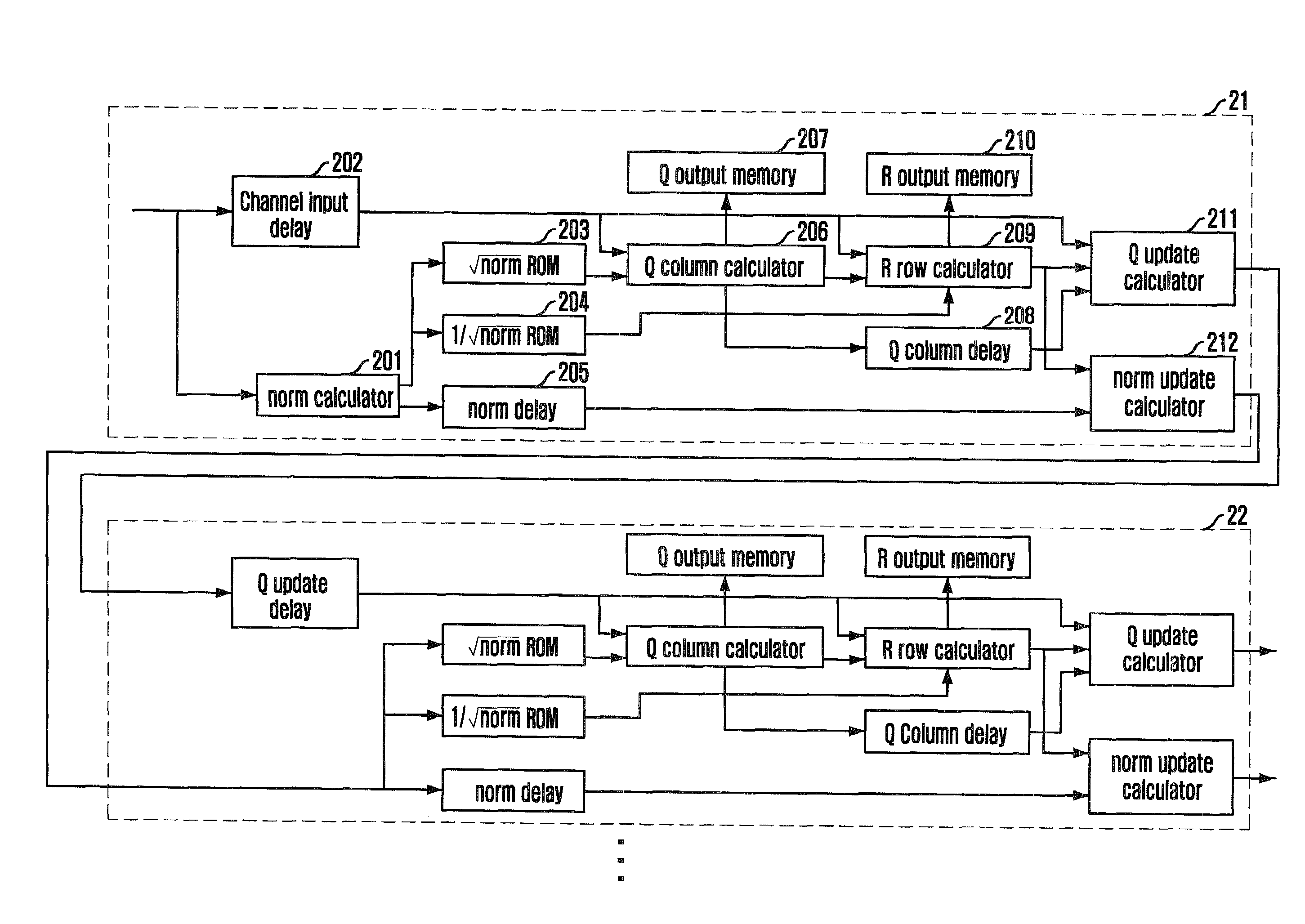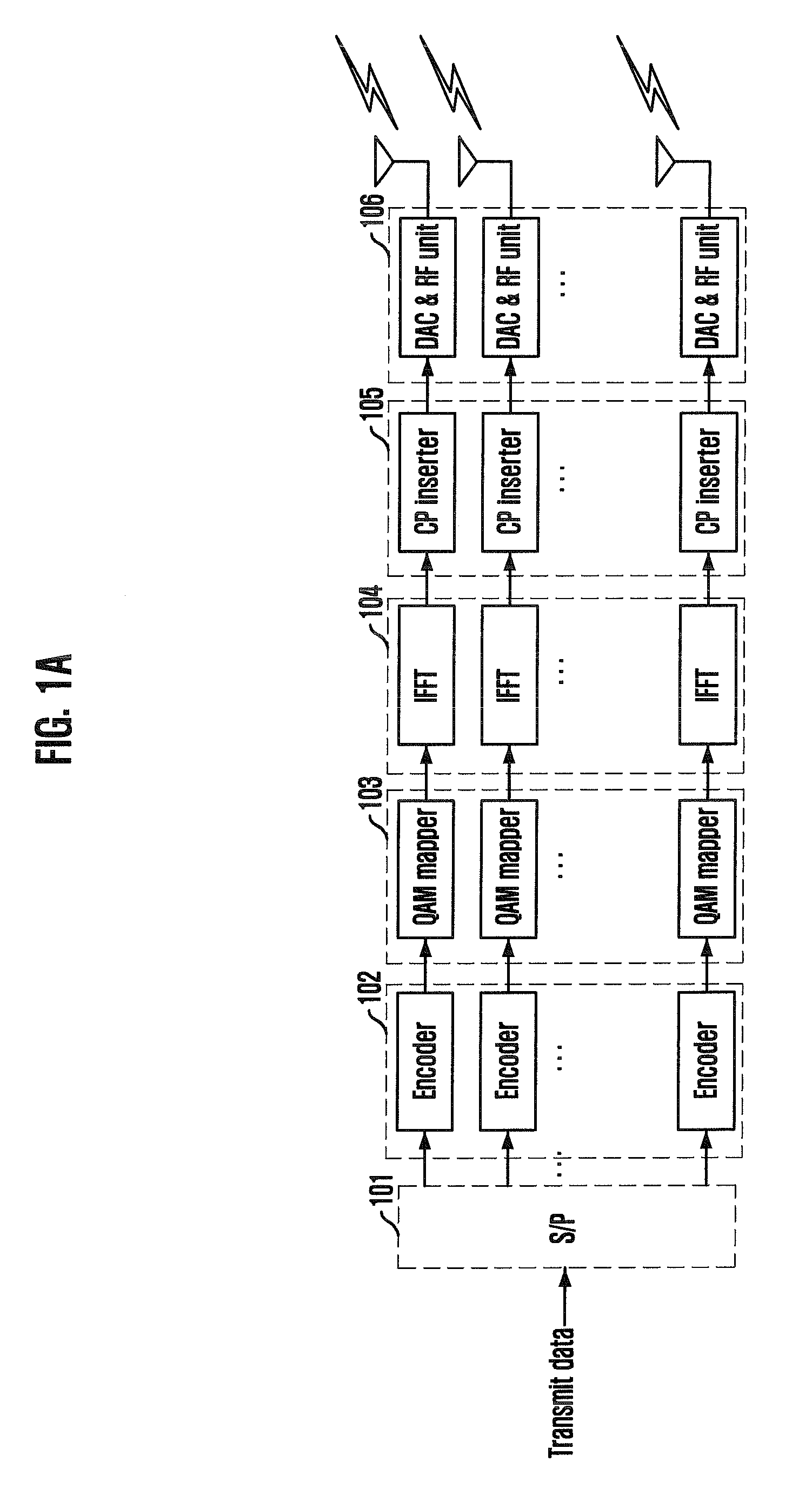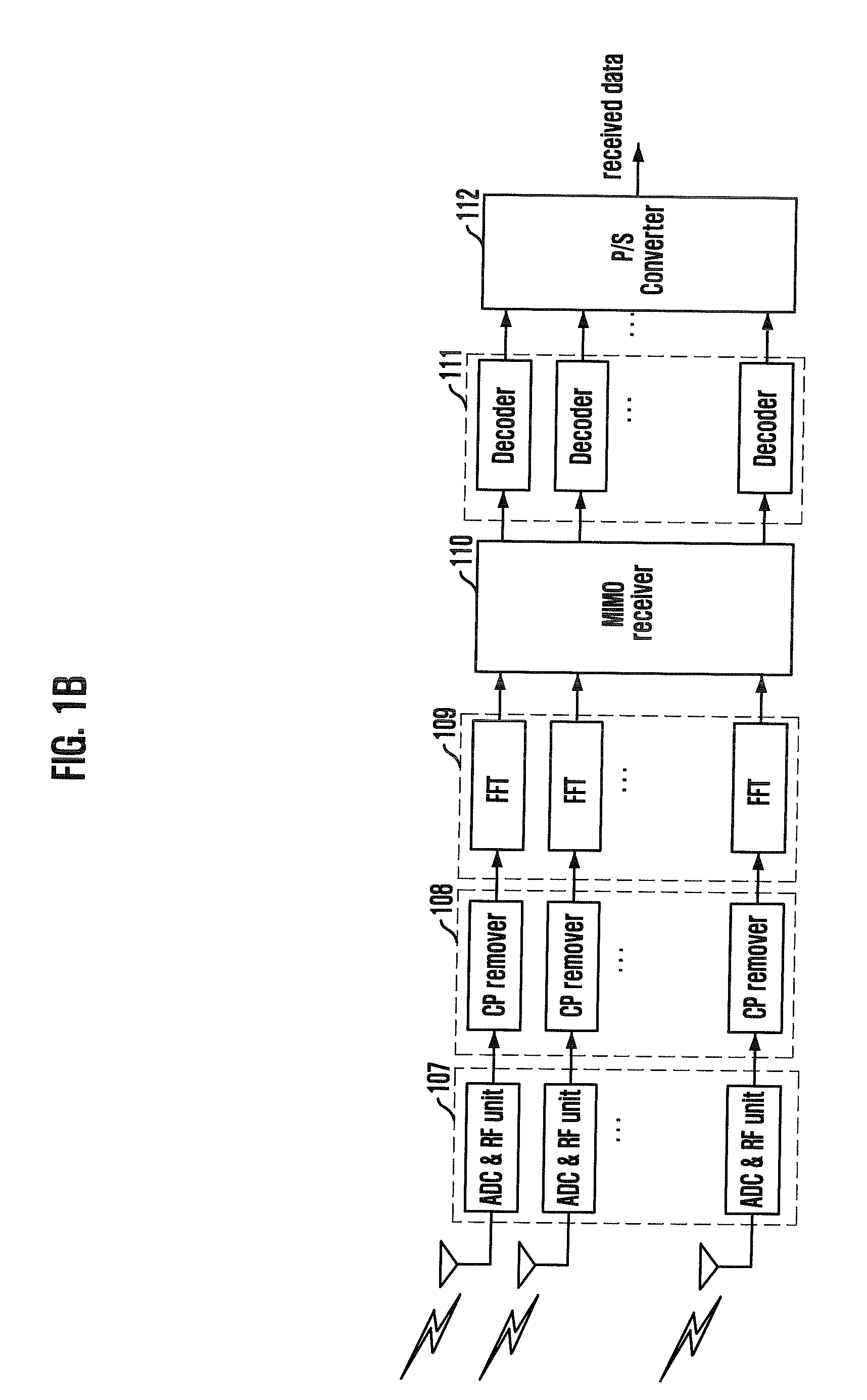Qr decomposition apparatus and method for MIMO system
- Summary
- Abstract
- Description
- Claims
- Application Information
AI Technical Summary
Benefits of technology
Problems solved by technology
Method used
Image
Examples
Embodiment Construction
[0049]The advantages, features and aspects of the invention will become apparent from the following description of the embodiments with reference to the accompanying drawings, which is set forth hereinafter.
[0050]FIG. 2 is a block diagram illustrating a QR decomposition apparatus in accordance with an embodiment of the present invention.
[0051]Referring to FIG. 2, the QR decomposition apparatus according to the present embodiment includes a norm calculator 201, a channel input delay 202, lookup table ROMs 203 and 204, a norm delay 205, a Q column calculator 206, a Q output memory 207, a Q column delay 208, an R row calculator 209, an R output memory 210, a Q update calculator 211, and a norm update calculator.
[0052]The norm calculator 201 receives channel input after Fast Fourier Transform (FFT) and calculates a vector size norm for qi through normi=|qi|2. The channel input delay 202 delays the channel input qi in order to use the channel input for calculating a column value of a uni...
PUM
 Login to View More
Login to View More Abstract
Description
Claims
Application Information
 Login to View More
Login to View More - R&D
- Intellectual Property
- Life Sciences
- Materials
- Tech Scout
- Unparalleled Data Quality
- Higher Quality Content
- 60% Fewer Hallucinations
Browse by: Latest US Patents, China's latest patents, Technical Efficacy Thesaurus, Application Domain, Technology Topic, Popular Technical Reports.
© 2025 PatSnap. All rights reserved.Legal|Privacy policy|Modern Slavery Act Transparency Statement|Sitemap|About US| Contact US: help@patsnap.com



